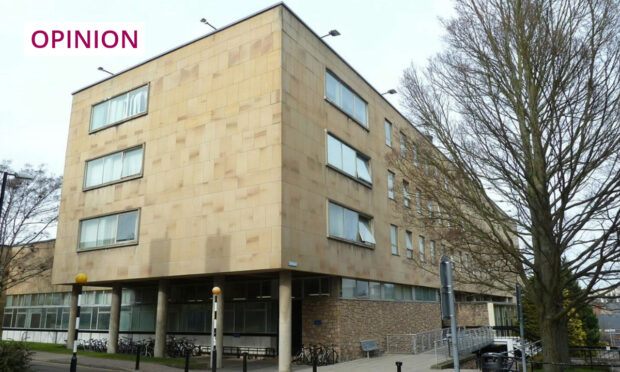A Scottish Government minister has said there is ‘’no immediate risk’’ to pupils and staff from unsafe concrete in Scottish schools.
The wellbeing economy secretary Neil Gray offered the reassurance after more than 100 schools in England were told to close off areas of their buildings because of safety concerns.
The reinforced autoclaved aerated concrete (RAAC) found in these buildings was commonly used between the 50s and 70s but is now deemed to be potentially dangerous because it puts the structures it is used in at risk of collapse.
It’s been a big week for experts in niche building materials, as anybody with knowledge of Raac has been dragged to their nearest television studio to explain to Joe public what on earth is going on.
Having sat through quite a few of these interviews, the verdict seems to be that this type of concrete looks like an Aero bar and is full of air holes.
And you don’t need to be structural engineer to understand why that might not be the safest option for a buildings that contain our kids.
All local authorities in Scotland are due to report findings of structural assessments next week.
Thus far, 35 schools have been identified as containing Raac.
Story raises concerns
At the weekend, Gray said that, if necessary, ‘”mitigations will be put in place where Raac is in place and there is a concern around it, to ensure the ongoing safety of that building and the people using it”.
He added: “There is no reason to believe that the safety concern has changed in the previous weeks.”
This story raises a few concerns.
Chiefly, the safety of children and staff.
And while there are no plans yet to shut any Scottish schools, you’ve got to feel for pupils and staff in England who are facing even more disruption so soon after the Covid chaos.
But the country’s dwindling bank account is also a worry.
Councils are struggling to deliver basic services.
If it is decided that any school buildings need to be repaired or replaced, then the entire burden of those costs must fall on the shoulders of national, not local, government.
A while back, I received a lengthy survey from my local council asking for opinions on what its spending priorities should be.
One question asked what local services residents would be content to see scrapped so money could be spent elsewhere.
Unfortunately, there wasn’t an option to pick like all services to remain in place – and could you please do something about the smashed bus shelters and overflowing bins while you’re at it.
There is a real sense of despair and disrepair in town centres across the country.
I spent a week travelling throughout Ireland in the summer and I was genuinely shocked by how clean and cheerful their public spaces were compared to ours.
The mental image of crumbling concrete is entirely in-keeping with the vibe of the UK in 2023, where nothing quite works as it should and many people are only one misstep away from total collapse.
Prepare for positive buzzwords
With both of Scotland’s parliaments now back from summer recess, politicians will soon be ramping up their campaigning ahead of the October by-elections and next year’s general election.
All parties will shortly begin using positive buzzwords that have tested well in focus groups.
There will be talk of ‘hope’ and ‘change’ and many promises to ‘rebuild’ and ‘reset’.
If you tune out the sloganeering and the soundbites and listen really, really carefully, other sounds will also become apparent.
You’ll hear the faint groan of gradually crumbling concrete in structures that weren’t built to last; the hollow clack of a disposable vape being dropped at a kerbside and the creaking door of a church that doubles up as a busy foodbank on Thursdays.
You might also hear the distinct beep of a card being declined at a supermarket, the engaged tone of a GP’s surgery and the shutters coming down on a high street shop for the last time.
The party that has the most credible plan for getting to grips with this mess will be the one that gets my vote.












Conversation